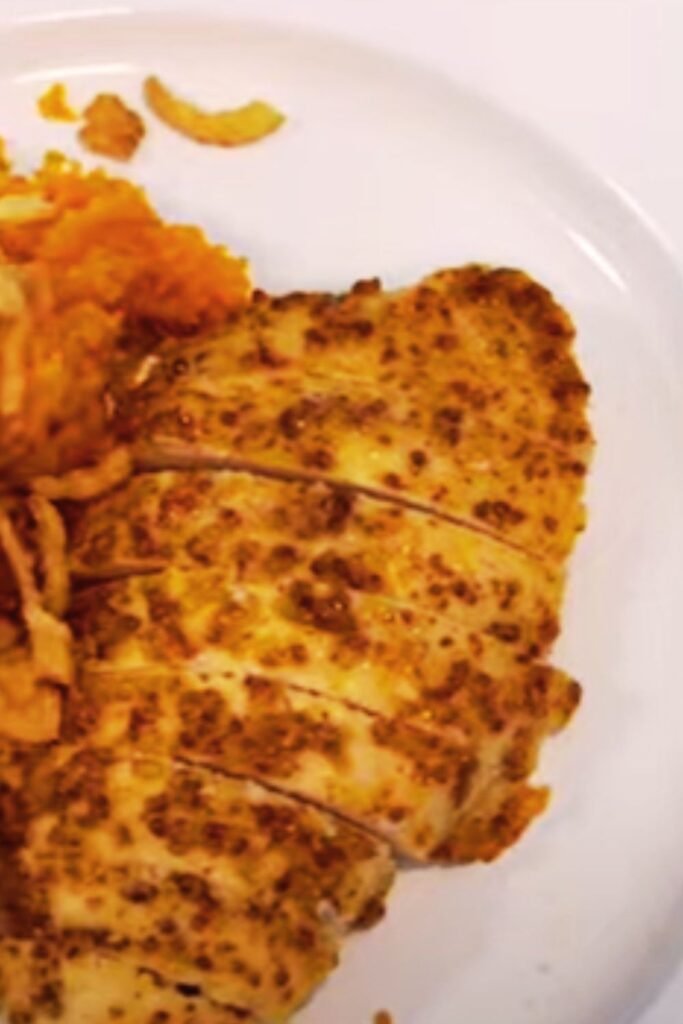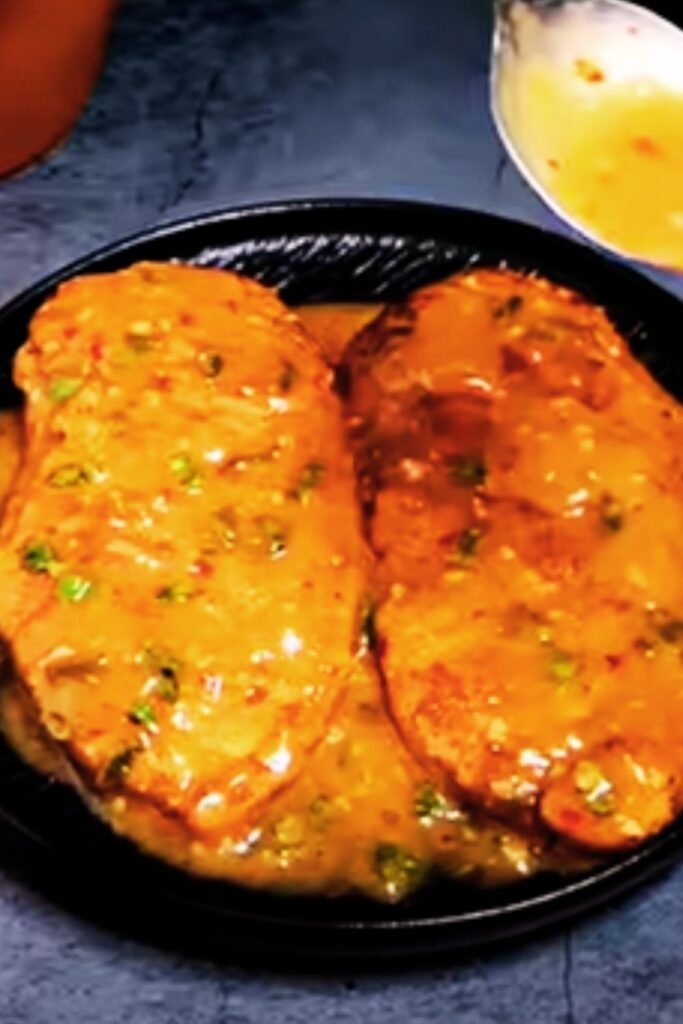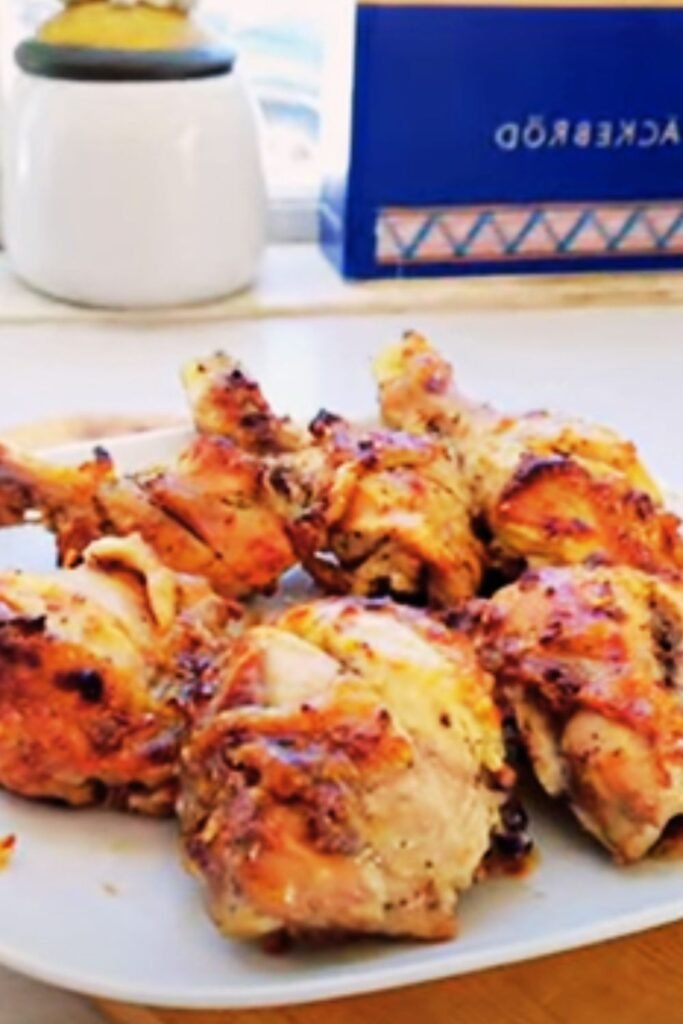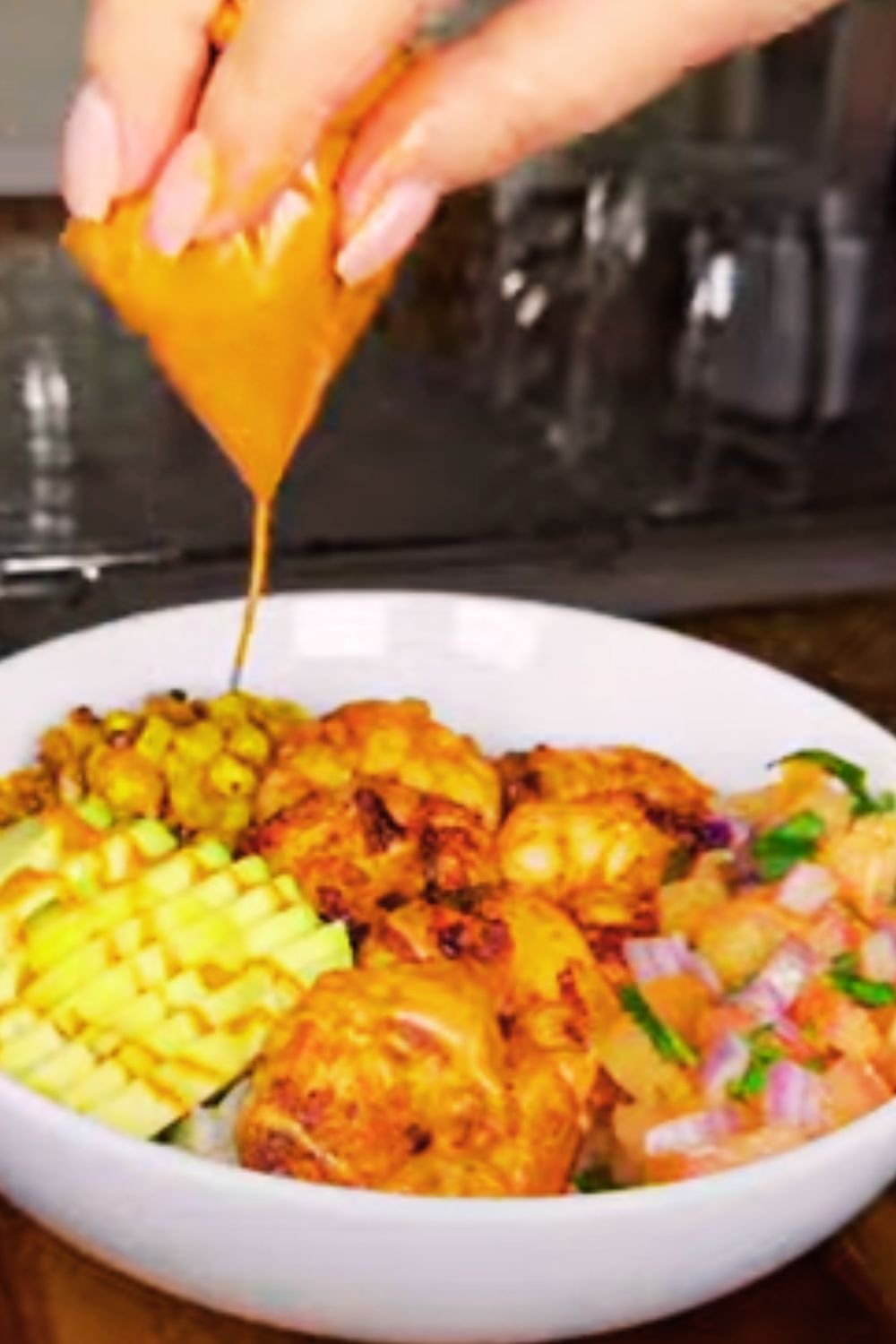There’s something magical about the combination of honey and mustard that transforms ordinary chicken into a mouthwatering feast. I’ve been perfecting this recipe for years, and it’s become a staple in my household. The sweet-tangy glaze caramelizes beautifully on the chicken while the vegetables roast to perfection alongside, creating a complete meal that’s as nutritious as it is delicious.
What I love most about this dish is its versatility. Whether you’re cooking for a busy weeknight or hosting a weekend dinner party, this honey mustard glazed chicken with roasted vegetables delivers impressive results with minimal effort. The ingredients are simple pantry staples, but the flavors are anything but basic.
The Perfect Honey Mustard Balance
The heart of this recipe lies in the glaze. Finding the right balance between honey’s sweetness and mustard’s pungency creates that irresistible flavor that keeps everyone coming back for seconds. I’ve experimented with countless variations over the years, and I’m excited to share my perfected blend with you.
The key is understanding the different types of mustard and how they interact with honey:
- Dijon mustard: Adds sophistication and depth
- Whole grain mustard: Provides texture and visual appeal
- Yellow mustard: Contributes familiar tang and bright color
By combining these varieties with quality honey, we create a glaze that’s complex yet approachable—perfect for family meals but impressive enough for guests.
Ingredients You’ll Need
For the Honey Mustard Glaze:
- ¼ cup high-quality honey
- 2 tablespoons Dijon mustard
- 1 tablespoon whole grain mustard
- 1 tablespoon yellow mustard
- 2 cloves garlic, minced
- 1 tablespoon olive oil
- 1 tablespoon apple cider vinegar
- ½ teaspoon smoked paprika
- ¼ teaspoon cayenne pepper (optional, for heat)
- Salt and freshly ground black pepper
For the Chicken:
- 2 pounds chicken thighs, bone-in and skin-on
- 2 tablespoons olive oil
- Salt and freshly ground black pepper
For the Roasted Vegetables:
- 1 pound baby potatoes, halved
- 2 large carrots, cut into 1-inch chunks
- 1 large red onion, cut into wedges
- 1 red bell pepper, cut into chunks
- 1 yellow bell pepper, cut into chunks
- 2 tablespoons olive oil
- 2 teaspoons dried herbs (thyme, rosemary, or herb de Provence)
- Salt and freshly ground black pepper
For Garnish:
- Fresh thyme or parsley, chopped
- Lemon wedges
Nutritional Powerhouse
Before we dive into the cooking process, let’s take a moment to appreciate the nutritional benefits of this meal:
| Ingredient | Key Nutrients | Health Benefits |
|---|---|---|
| Chicken thighs | Protein, B vitamins, zinc | Muscle maintenance, energy production, immune support |
| Honey | Natural sugars, antioxidants | Energy boost, antibacterial properties |
| Mustard | Selenium, magnesium, omega-3 fatty acids | Anti-inflammatory, digestive aid |
| Bell peppers | Vitamin C, vitamin A, potassium | Immune support, vision health, heart health |
| Carrots | Beta-carotene, fiber, vitamin K | Vision health, digestive health, bone health |
| Potatoes | Vitamin C, potassium, vitamin B6 | Immune support, heart health, brain function |
| Olive oil | Monounsaturated fats, vitamin E, antioxidants | Heart health, anti-inflammatory, skin health |
This balanced meal provides a complete nutritional profile with proteins, complex carbohydrates, healthy fats, and a rainbow of vitamins and minerals.
Equipment Needed
I find that having the right tools makes this recipe even easier to prepare:
- Large mixing bowl for the glaze
- 9×13-inch baking dish or large rimmed baking sheet
- Meat thermometer
- Aluminum foil
- Small saucepan (for extra glaze)
- Pastry brush
- Sharp chef’s knife and cutting board

Step-by-Step Cooking Instructions
Preparing the Glaze
- In a medium bowl, whisk together honey, all three mustards, minced garlic, olive oil, apple cider vinegar, smoked paprika, and cayenne (if using).
- Season with salt and black pepper to taste.
- Reserve ⅓ of the mixture for basting during cooking and serving.
Preparing the Chicken
- Preheat your oven to 425°F (220°C).
- Pat the chicken thighs dry with paper towels. This is crucial for crispy skin—I learned this through many trials!
- Season generously with salt and pepper on both sides.
- Place the chicken in a large bowl and pour about half of the honey mustard glaze over it.
- Using your hands (with gloves if preferred), massage the glaze into the chicken, ensuring each piece is well-coated.
- Let the chicken marinate for at least 30 minutes at room temperature, or up to 8 hours in the refrigerator for deeper flavor. If refrigerated, bring to room temperature before cooking.
Preparing the Vegetables
- While the chicken marinates, prep your vegetables.
- In a large bowl, toss potatoes, carrots, onion, and bell peppers with olive oil, dried herbs, salt, and pepper.
- Ensure all vegetables are evenly coated with oil and seasonings.
Roasting Process
- Arrange seasoned vegetables around the edges of a large rimmed baking sheet or roasting pan, leaving space in the center.
- Place the marinated chicken thighs skin-side up in the center of the pan.
- Roast in the preheated oven for 30 minutes.
- Remove from oven, brush chicken with additional glaze, and gently toss the vegetables.
- Return to oven and continue roasting for 15-20 minutes, or until chicken reaches an internal temperature of 165°F (74°C) and vegetables are tender and caramelized.
- For extra crispy skin, broil for the final 2-3 minutes, watching carefully to prevent burning.
Finishing Touches
- Remove from oven and let rest for 5-10 minutes.
- Meanwhile, if desired, simmer the remaining glaze in a small saucepan until slightly thickened.
- Drizzle the chicken with the thickened glaze or serve it on the side.
- Garnish with fresh herbs and lemon wedges.
Tips for Perfect Results Every Time
After making this dish countless times, I’ve gathered some invaluable insights that make all the difference:
- Choose the right chicken: While you can use any chicken pieces, bone-in, skin-on thighs provide the most flavor and stay juicier during roasting.
- Don’t crowd the pan: If you’re doubling the recipe, use two baking sheets. Overcrowding leads to steaming rather than roasting, which prevents caramelization.
- Vegetable sizes matter: Cut denser vegetables like potatoes and carrots smaller than quick-cooking ones like bell peppers to ensure everything finishes cooking at the same time.
- Rotation is key: For even cooking, rotate the pan halfway through the cooking time, especially if your oven has hot spots.
- Basting strategy: Save some of the glaze for basting during cooking and drizzling before serving—this creates layers of flavor.
- Perfect pairing: Consider the cooking times of different vegetables. I like to give potatoes and carrots a 10-minute head start before adding quicker-cooking vegetables.

Variations to Keep It Exciting
While the classic recipe is a winner, I love experimenting with these variations to keep dinner interesting:
Spicy Honey Mustard Chicken
Add 1-2 tablespoons of sriracha or 1 teaspoon of red pepper flakes to the glaze for a spicy kick that balances beautifully with the honey’s sweetness.
Herb-Infused Version
Add 2 tablespoons of fresh herbs like rosemary, thyme, and sage to the glaze. The aromatic herbs complement the honey mustard perfectly and add visual appeal.
Citrus Honey Mustard
Add the zest and juice of one orange or lemon to the glaze. The citrus brightens the flavors and adds a refreshing dimension.
Asian-Inspired Twist
Replace the apple cider vinegar with rice vinegar and add 1 tablespoon of soy sauce and 1 teaspoon of grated ginger to the glaze for an Asian-inspired flavor profile.
Mediterranean Style
Add 1 tablespoon of Mediterranean herbs (oregano, basil, thyme) and roast with olives, cherry tomatoes, and artichoke hearts alongside the other vegetables.
Make-Ahead and Storage Tips
This dish works wonderfully as a meal prep option. Here’s how I manage it:
- Marinade prep: The honey mustard glaze can be made up to 5 days ahead and stored in an airtight container in the refrigerator.
- Vegetable prep: Chop all vegetables up to 2 days in advance and store in airtight containers in the refrigerator.
- Partial cooking: You can roast the vegetables partially (about 15 minutes) earlier in the day, then finish cooking them with the chicken later.
- Storage: Leftovers will keep in the refrigerator for up to 4 days. Store the chicken and vegetables separately for best results.
- Reheating: Reheat in a 350°F (175°C) oven for 15-20 minutes until warmed through. Avoid the microwave if possible, as it can make the chicken rubbery and the vegetables soggy.
- Freezing: While you can freeze the cooked dish for up to 3 months, the vegetable texture will change somewhat. Thaw overnight in the refrigerator before reheating.
Serving Suggestions
I love to serve this complete meal with complementary sides that enhance the flavor profile:
- A crisp green salad with a light vinaigrette cuts through the richness of the glazed chicken
- Crusty artisan bread for soaking up the delicious pan juices
- Steamed brown rice or quinoa to add a healthy grain component
- Roasted garlic mashed potatoes for an extra indulgent meal
- A side of sautéed greens like spinach or kale for additional vegetables
- Fresh cucumber and tomato salad for a refreshing contrast

Troubleshooting Common Issues
Even experienced cooks encounter challenges sometimes. Here are solutions to common problems with this recipe:
Glaze Burning Before Chicken Is Done
Solution: Tent the chicken loosely with foil after the first 20 minutes of cooking, removing it for the last 5-10 minutes to crisp up the skin.
Vegetables Cooking Unevenly
Solution: Ensure all vegetables are cut to appropriate sizes based on density. Harder vegetables like carrots and potatoes should be cut smaller than softer ones like bell peppers and onions.
Chicken Not Crisping
Solution: Make sure to thoroughly pat the chicken dry before applying the glaze. Additionally, ensure your oven is fully preheated and consider finishing with a brief broil.
Too Sweet or Too Tangy
Solution: Adjust the honey-to-mustard ratio in your glaze. More honey for sweetness, more mustard for tanginess. Add a splash of vinegar if it needs brightness.
Dry Chicken
Solution: Use a meat thermometer and cook only until the internal temperature reaches 165°F (74°C). Bone-in, skin-on thighs are more forgiving and stay juicier than boneless cuts.
The Science Behind the Flavor
Understanding the science behind cooking can help elevate your results. Here’s what makes this recipe work so well:
- Maillard reaction: The sugars in honey caramelize when exposed to high heat, creating complex flavor compounds and that beautiful golden-brown color on the chicken skin.
- Fat-soluble flavors: Many of the flavor compounds in herbs and spices are fat-soluble, which is why incorporating olive oil into the glaze helps distribute the flavors more effectively.
- Acid balance: The vinegar and mustard provide acidity that tenderizes the chicken protein structures while balancing the sweetness of the honey.
- Flavor development over time: Allowing the chicken to marinate creates time for the flavors to penetrate beyond the surface through passive diffusion.
Environmental and Ethical Considerations
As someone who cares about sustainable cooking, I try to make environmentally conscious choices:
- Chicken sourcing: When possible, choose free-range or organic chicken raised without antibiotics.
- Seasonal vegetables: Adapt the vegetable selection based on what’s in season locally for the freshest flavor and lowest environmental impact.
- Honey selection: Support local beekeepers by purchasing locally produced honey, which also often has more distinctive flavors than mass-produced options.
- Reducing waste: Save chicken bones to make homemade stock, and use vegetable trimmings in compost or for making vegetable broth.
Questions & Answers
Q: Can I use boneless, skinless chicken breasts instead of bone-in thighs? Yes, you can substitute boneless, skinless chicken breasts, but you’ll need to adjust the cooking time. Chicken breasts cook faster and can dry out more easily, so check them after about 20-25 minutes. Consider reducing the oven temperature to 400°F to prevent them from drying out. The internal temperature should still reach 165°F.
Q: Is it possible to make this recipe gluten-free? This recipe is naturally gluten-free as written, but always check your mustard labels as some specialty mustards may contain gluten or be processed in facilities that handle gluten. All other ingredients are naturally gluten-free.
Q: Can I prepare this as a sheet pan meal in advance and freeze it before cooking? I don’t recommend freezing the raw assembled sheet pan meal as the vegetables will release water when thawed, affecting the roasting process. However, you can prep all components (marinate the chicken, chop vegetables) and freeze them separately. Thaw completely before assembling and cooking.
Q: What’s the best way to ensure my vegetables don’t get soggy? Three key techniques prevent soggy vegetables: 1) Don’t overcrowd the pan, 2) Make sure your oven is fully preheated to 425°F, and 3) Dry your vegetables thoroughly after washing. Additionally, cutting vegetables into larger pieces reduces sogginess.
Q: Can I make this in a slow cooker instead of the oven? While you can adapt this for a slow cooker, you won’t get the same caramelization on the chicken or roasted quality in the vegetables. If using a slow cooker, I recommend browning the chicken first in a skillet, then cooking on low for 4-6 hours. The vegetables will have a softer texture.
Q: How can I make this recipe dairy-free and egg-free? Good news! This recipe is naturally dairy-free and egg-free as written.
Q: What can I substitute for honey to make this recipe vegan? Maple syrup makes an excellent substitute for honey with a slightly different but complementary flavor profile. Agave nectar also works well, though it’s a bit sweeter so use about 25% less.
Q: How do I know when the chicken is done cooking? The most reliable method is using a meat thermometer inserted into the thickest part of the chicken (without touching bone) to ensure it reaches 165°F (74°C). Visually, the juices should run clear when pierced, not pink.
Q: Can I add different vegetables based on what I have available? Absolutely! This recipe is highly adaptable. Good alternatives include parsnips, turnips, sweet potatoes, Brussels sprouts, cauliflower, or broccoli. Just adjust cutting sizes and potentially cooking times based on vegetable density.
Q: If I don’t have all three types of mustard, can I still make this dish? Yes! While the combination provides complex flavor, you can use just one type. Dijon would be my first choice if you’re only using one, as it offers good depth of flavor. Adjust quantities to maintain the same total amount of mustard called for in the recipe.


